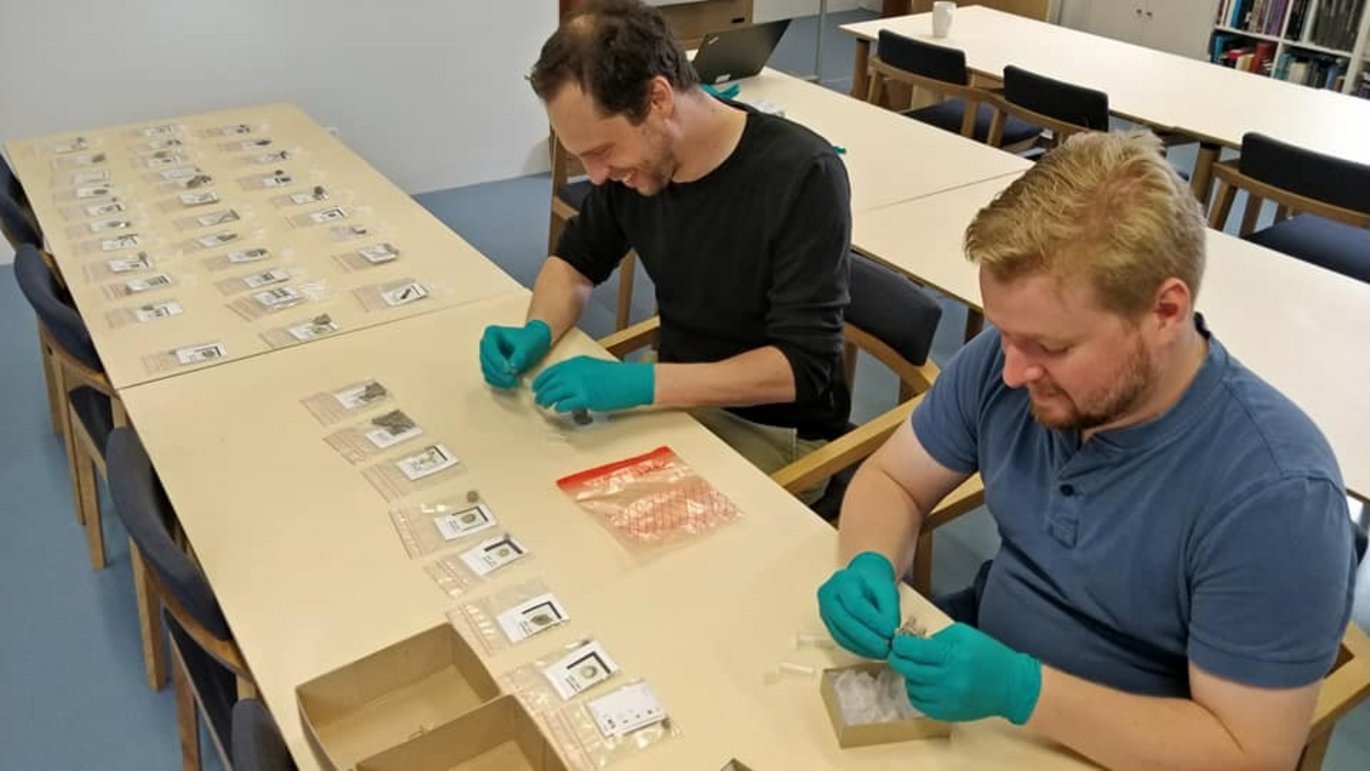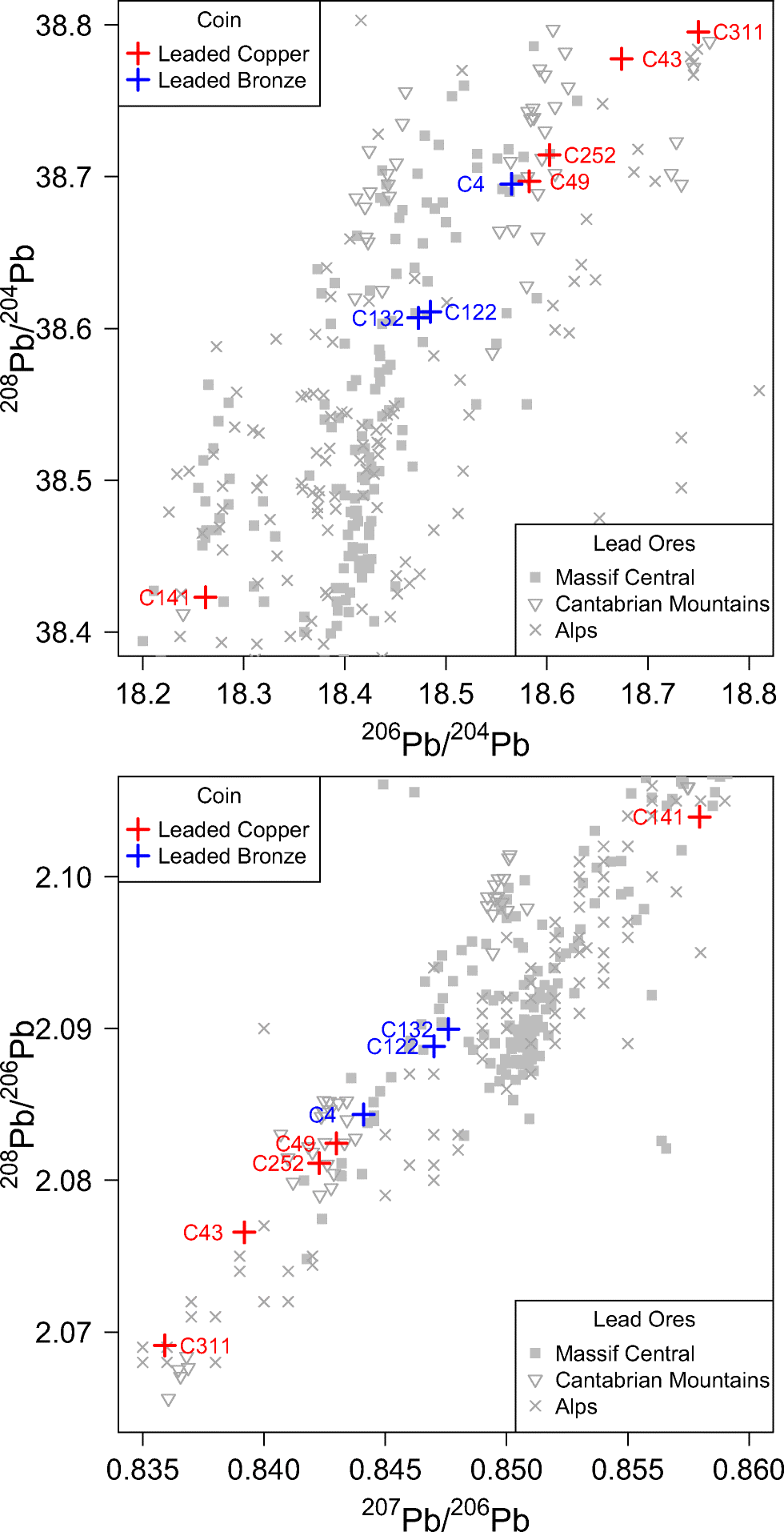Lead isotopes, society and urban networks
Why do archaeologists use analytical techniques borrowed from geologists and the earth sciences? Assistant Professor Thomas Birch highlights how lead isotopes underpin a concerted European research effort into provenancing silver and showcases how it has been essential for reconstructing metal networks in UrbNet’s flagship projects.


By Assistant Professor Thomas Birch
Lead isotope analysis can be used to trace the movement of metals in past societies, which is highly relevant for UrbNet’s research into material networks.
What is lead isotope analysis?
One of the main tools for provenancing metals and metal artefacts in archaeology is lead isotope analysis. It has been used since the early 1970s and remains a powerful tool for establishing the mining origin of different metals. The way it works, put simply, is that the isotope ratios of lead contained within a metal artefact are measured and then compared to that of ores and/or by-products from mining sources. If the ratios of a metal artefact match those of a particular geological region, or a particular mine, then there is evidence to build a strong case for a direct provenance link.
Why is lead isotope analysis relevant for UrbNet?
UrbNet has made use of this application to help establish connections between urban sites and metal resources in order to reconstruct aspects of urban networks. For Jerash, one of UrbNet’s key excavation projects, lead isotopes helped discover the sources of copper and lead used to produce small coinage, known as minimi, from the Late Roman period. It also revealed the shift in metals used towards more local mines in the region with the emergence of some of the earliest Islamic coinage. For Ribe, the earliest town in Scandinavia, lead isotopes are being used to reconstruct and monitor the sources of lead used during the period of occupation and activity of the site.
Recent developments in lead isotope research
Scholars from geological sciences and archaeology constantly seek to improve the lead isotope method as well as the interpretation of results so that they are as precise and reliable as possible. This includes using state-of-the-art instruments to perform measurements as well as implementing statistical approaches to test provenance relationships, work that Assistant Professor Thomas Birch is actively engaged in. High-resolution sampling is normally reserved for coinages accurately dated to their annual minting year. Whilst this level of dating is not possible for all artefacts, UrbNet is pioneering a high-resolution sampling strategy of artefacts from Ribe to investigate the source(s) of lead metal across a tightly defined time-span, all thanks to the high-definition excavations producing a well-defined stratigraphic sequence.
Lead isotopes and silver networks
Never before has lead isotope analysis been so crucial to archaeological research of metals in urban societies as it is today. In 2017, UrbNet awarded a PhD grant to Mahir Hrnji? to investigate long-distance trade of silver during the Viking Age, the backbone of the project being conducting lead isotope analysis for metal provenancing. Since then, three major ERC grants representing an investment of over 6 million euros has been awarded to projects investigating the origins of silver in different urban societies – all of them relying explicitly on lead isotope analysis: Silver and the Origins of the Viking Age (ERC Starting Grant 2019 – ongoing, EUR 1.5m, PI: Jane Kershaw) Rome and the Coinages of the Mediterranean 200 BCE – 64 CE (ERC Advanced Grant, 2019 – ongoing, EUR 2.2m, PI: Kevin Butcher), Silver (ERC Advanced Grant, 2017 – ongoing, EUR 2.5m, PI: Francis Albarède). Thomas Birch is also analysing North-African silver dirhams to investigate the connectivity of Sardinia in the Mediterranean during the early medieval period.
Lead isotopes, DIME and danefæ
Across different societies in time and space, silver has played a major role in trade and exchange, which is what makes it an extremely useful material for academic research into urban networks. Particularly so with the Viking Age, which is greatly characterised by silver jewellery, hack silver and silver coinage. With recent and exciting discoveries, such as the Damhus hoard (2018) and other metal detectorists’ finds (recorded in the Digital Metal Finds database called DIME), the potential for future research on Danish treasure trove in the future (or ‘danefæ’) is particularly unique in Denmark.
Read the full open access Jerash coinage article here:
Birch, T., Orfanou, V., Lichtenberger, A., Raja, R., Barfod, G., Lesher, G., Schulze, I. and Schulze, W. (2019). From nummi minimi to ful?s – small change and wider issues: characterising coinage from Gerasa/Jerash (Late Roman to Umayyad periods). Archaeological and Anthropological Sciences 11(10), 5359–5376. DOI: 10.1007/s12520-019-00866-9
For developments in the analysis and provenancing of silver, read another open access article here:
Birch, T., Westner, K., Höfer, H.E., Seitz, H.-M., Kemmers, F. and Klein, S. (2020). Retracing Magna Graecia’s silver: coupling lead isotopes with a multi-standard trace element procedure. Archaeometry 62, 81–108. DOI: 10.1111/arcm.12499
